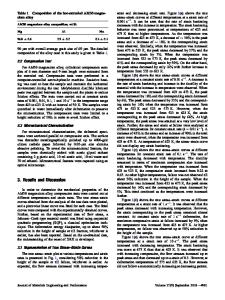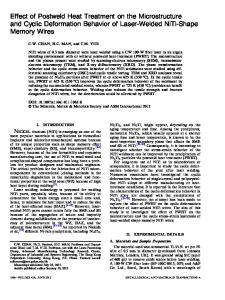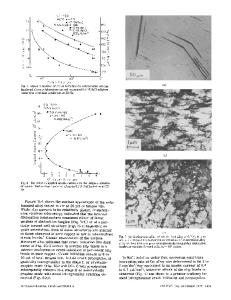Cyclic Deformation Behavior of a Rare-Earth Containing Extruded Magnesium Alloy: Effect of Heat Treatment
- PDF / 10,194,181 Bytes
- 20 Pages / 593.972 x 792 pts Page_size
- 102 Downloads / 352 Views
E to the tremendous environmental concerns and escalating global energy demand encountered by the transportation industry in recent years, lightweighting of vehicles is being deemed as a prime design tool for improving the fuel economy and reducing anthropogenic climate-changing, environment-damaging, costly, and human death-causing* emissions.[1–6] It is today even referred *According to Science News entitled ‘‘Air pollution kills 7 million people a year’’ on March 25, 2014 at http://news.sciencemag.org/signalnoise/2014/03/air-pollution-kills-7-million-people-year: ‘‘Air pollution is not just harming Earth; it is hurting us, too. Startling new numbers released by the World Health Organization today reveal that one in eight deaths are a result of exposure to air pollution. The data reveal a strong link between the tiny particles that we breathe into our lungs and the illnesses they can lead to, including stroke, heart attack, lung cancer, and chronic obstructive pulmonary disease.’’
F.A. MIRZA, Ph.D. Student, and D.L. CHEN, Professor and Ryerson Research Chair, are with the Department of Mechanical and Industrial Engineering, Ryerson University, 350 Victoria Street, Toronto, ON M5B 2K3, Canada. Contact e-mail: [email protected] D.J. LI, Lecturer, and X.Q. ZENG, Professor, are with The State Key Laboratory of Metal Matrix Composites, School of Materials Science and Engineering, Shanghai Jiao Tong University, 800 Dongchuan Road, Shanghai 200240, P.R. China. Manuscript submitted October 28, 2013. Article published online December 4, 2014 1168—VOLUME 46A, MARCH 2015
to as the ‘‘storm’’ of lightweighting—a revolution in materials, processes, and business models, which is brewing on the horizon of the automotive and aerospace industry. To fabricate lighterweight vehicles, advanced high-strength steels, aluminum alloys, magnesium (Mg) alloys, and polymers are being used in the aerospace and automotive sectors, but substantial reductions could be further achieved by employing ultra-lightweight Mg alloys due to their low density, high strength-to-weight ratio, and superior damping capacity.[1,2,7] There are currently intensive studies in the development of wrought Mg alloys with high strength, high corrosion resistance, and superior formability for structural applications.[8,9] Despite the potential of substantial reductions in weight, most wrought Mg alloys exhibited unusual mechanical properties, e.g., tension–compression yield asymmetry, limited ductility, and pronounced directional anisotropy arising from the presence of strong crystallographic texture related to their hexagonal close-packed (HCP) structure with a limited number of slip systems activated during extrusion or rolling processes.[10–15] Indeed, for the vehicle components subjected to dynamic cyclic loading, such mechanical anisotropy and tension–compression yield asymmetry could lead to irreversibility of cyclic deformation which may have an unfavorable influence on the material performance.[15] These problems could be tackled through texture modification. One
Data Loading...











